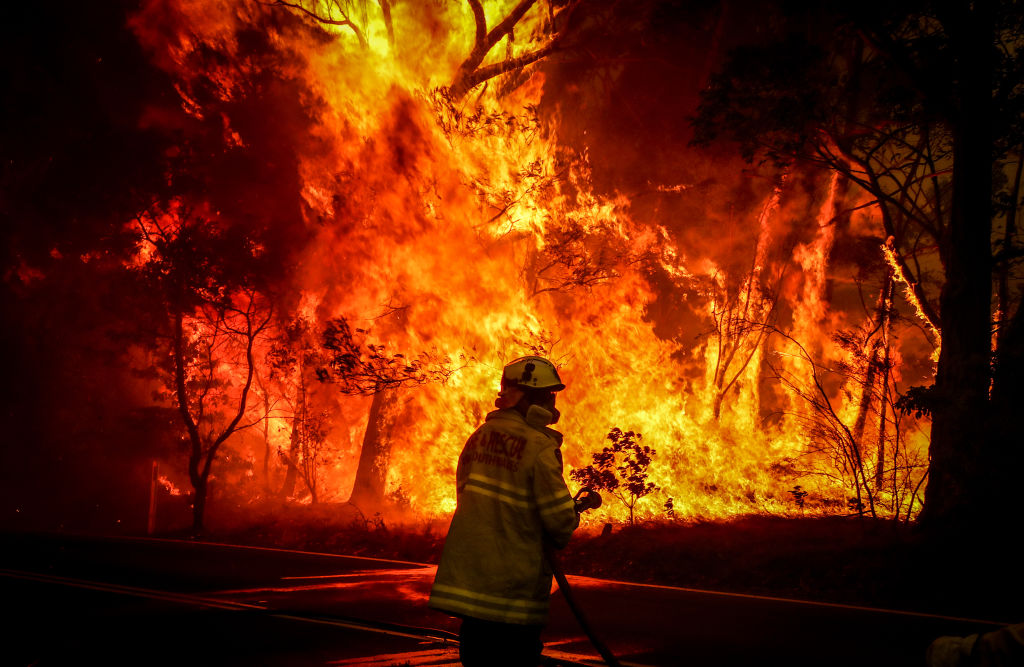
In its final report issued last week, the Royal Commission into Australia’s National Natural Disaster Arrangements warns of an unprecedented, increasing and unavoidable threat to Australia from climate change, requiring a ‘fundamental shift in strategic thinking about national natural disaster risk management’.
In terms similar to those expressed in recent ASPI analysis, the commission notes:
We are likely to see more compounding disasters on a national scale with far-reaching consequences. Compound disasters may be caused by multiple disasters happening simultaneously, or one after another. Some may involve multiple hazards—fires, floods and storms. Some have cascading effects—threatening not only lives and homes, but also the nation’s economy, critical infrastructure and essential services, such as our electricity, telecommunications and water supply, and our roads, railways and airports.
The commission highlights the risk of ‘a catastrophic impact’ across Australia from these events, including at the community level. With cascading disasters, each subsequent hazard increases the scale of the damage caused by the previous hazard.
Last summer’s devastating bushfires may be evidence that we are already entering this new era of disasters. As the commission notes, communities in Queensland had already ‘experienced successive conditions of drought, heatwaves, bushfires, hailstorms and flooding, compounding the destructive impact’. Indeed, in the past three years, 53 of Queensland’s 73 local governments have experienced three or more major disasters.
Most of the recommendations in the final report, while important and practical, don’t fundamentally shift national strategic thinking about disaster risk. They propose many tactical improvements in our emergency preparations and response capability, such as purchasing additional firefighting aircraft, conducting better evacuation planning, harmonising emergency warning systems across the states and territories, strengthening the interoperability of equipment and systems, and creating a national register of emergency services personnel.
It would have been useful if the commissioners had proposed a national communications campaign to help prepare the public for this emerging era of disasters. Instead the report somewhat anaemically recommends that governments ‘continue to deliver, evaluate and improve’ programs ‘aimed at promoting disaster resilience for individuals and communities’.
Some of the recommendations, if implemented effectively, will contribute to the fundamental shift in disaster risk management the commission has called for. The commission’s proposed actions include requiring consideration of climate and disaster risk in land-use planning; establishing a national mechanism to communicate these risks to households (and prospective purchasers); protecting critical infrastructure; and creating the legislative mandate for the federal government to declare a national emergency.
Underpinning each of these recommendations is the need for more accurate information on the climate and disaster risk affecting communities. The commission has recognised this in highlighting the need to invest in improving climate change models and a specific recommendation that governments develop ‘downscaled’ climate projections.
Arguably the single most transformational recommendation in the report is for the federal government to establish a national entity dedicated to championing resilience across the nation:
Its remit should be to think broadly about all of the measures necessary to make the country resilient to natural disasters, and plan and respond accordingly. It should focus on reducing long-term disaster risk and … planning and cooperation across multiple government departments and agencies at all levels of government, including local government, and extensive engagement with the private sector, non-government organisations and Australian communities.
Four elements need to be in place to enable this new entity to achieve its full potential. First, it should be separated bureaucratically from Emergency Management Australia, the agency responsible for coordinating Australia’s national response to disasters. My previous international experience suggests that if resilience is placed with emergency response, the latter will always trump the former.
Second, and related to the above, the new entity should report to the Department of the Prime Minister and Cabinet, rather than to a line agency. This will make it somewhat easier to convene the necessary cross-departmental discussions and to overcome bureaucratic resistance to the changes that will be required. There would also be some advantage in the entity having additional reporting obligations to the Minister for Agriculture, Drought and Emergency Management, given the need for it to be engaged with the broader disaster management community.
Third, the new entity should be allocated a significant budget. Its reporting line to PM&C will give it significant gravitas to convene the key players both within and outside of government, but government funding can be useful to leverage significant private-sector investment in initiatives that are in the public interest.
Fourth, one of its key tasks should be to begin facilitating the development of model legislation, standards, codes and the like that can deliver major improvements in national resilience. The political will at various jurisdictional levels may not yet exist to implement many of the initiatives, but this can change rapidly in the wake of a major disaster. One of the main advantages of the new organisation will be to have thought through the issues, consulted widely and designed sensible solutions that are ready to be progressed when the opportunities arise.
Given the commission’s deep concern about the impact of climate change on Australia, it’s surprising that the final report says nothing about the urgency of reducing greenhouse gas emissions globally. The terms of reference provided the latitude for it to do so (‘We direct you to make any recommendations arising out of your inquiry that you consider appropriate’) and the government has frequently acknowledged that Australia needs to do its part to reduce emissions. This is the most urgent global risk-reduction measure and the most glaring gap in the commission’s otherwise fine report.

